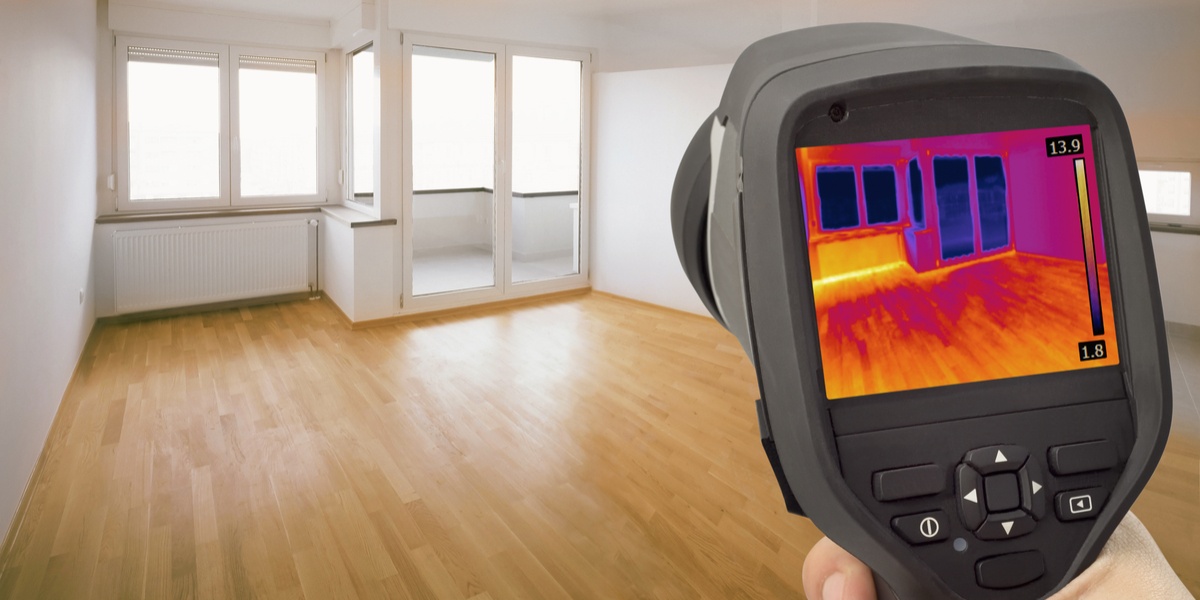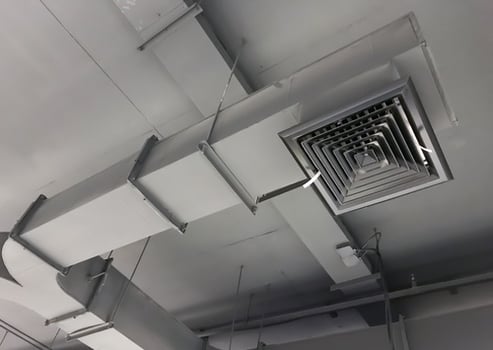Why Energy Consultants Recommend an Air Leak Inspection

Having well-designed HVAC systems is important to achieve suitable indoor conditions and optimal costs. However, the building envelope is also important but frequently overlooked. Having efficient heating and cooling systems is great, but even better results are possible when the building envelope minimizes heat gain during summer and heat loss during winter.
Insulation acts as a barrier against heat transfer, reducing unwanted heat gain and loss across walls, ceilings and floors. However, heat can also leak into and out of a building through air movement, and this increases heating and cooling expenses.
- Any air exchange between a building interior and exterior increases the cooling load, if it happens during summer.
- The opposite principle applies during winter, when air exchange increases heating loads.
- Since air carries moisture, it may increase the load on humidification or dehumidification systems, depending on the relative humidity difference between indoor and outdoor air.
In a few words, unwanted air movement through a building envelope increases the operating costs of many building systems. Therefore, reducing or eliminating air leaks is in the best interest of property owners.
Does your building have adequate insulation and air-tightness?
Air leaks also make your building less resilient during emergencies. As an example, assume that harsh weather interrupts the local power supply and HVAC systems stop operating. In this case, a building that does not hold indoor air effectively can get warm or cold very fast.
How Air Leaks Affect Air Conditioning and Heating Systems
It is common knowledge that air conditioning systems lower the temperature of indoor air, but a less known fact is that they also remove humidity. As we discussed in a previous article, a high humidity content in the air causes problems such as moisture damage and mold growth.
Energy expenses are higher when air conditioning systems operate in a building with many air leaks, since unwanted air exchange brings both heat and humidity into the building. Consider that air leakage has negative effects even when it occurs between different building areas, for example between air-conditioned rooms and unconditioned crawl spaces.

If you are considering an air conditioning upgrade, getting an air leak inspection first is strongly recommended. By reducing unwanted air exchange in your building, you can calculate the cooling load for the the new air conditioning system more accurately.
Air leaks have negative consequences throughout the entire year. Just like they burden air conditioning systems during summer, they increase the heating load during winter. The opposite behavior happens here: air leaks cause a loss of indoor heat, and when the cold winter air is dry, there is also a major humidity loss.
US Department of Energy Recommendations to Detect Air Leaks
The location of some air leaks is very obvious. For example, you have surely noticed how air moves through the spaces around doors and windows, or between their frames and the walls. Caulking is a cheap and effective solution for air leaks between fixed components, and weatherstripping is recommended for moving elements like doors and windows.
Other air leaks are more difficult to detect, and you will normally need an energy audit to pinpoint their locations. To find hidden air leaks and to measure the rate of outdoor air infiltration, the US Department of Energy recommends a blower door test:
- A large blower is attached to the main entrance of a home, and all other doors and windows are closed.
- The blower extracts air from your home, causing negative pressurization. If there are any leaks in your building envelope, outdoor air will start moving in through them.
- Energy consultants can calculate the outdoor infiltration rate based on the airflow established by the blower door, and the pressure differences measures between the building interior and exterior.
- A smoke stick is used to locate individual air leaks. When it is moved close to an air leak, the normal upward flow of smoke is disrupted by air infiltration.
- Only a calibrated blower can measure the air infiltration rate; uncalibrated units are only useful for finding the locations of air leaks.
- A blower door test one of the mandatory requirements to certify a home under the ENERGY STAR program.
Differences in air temperature cannot be detected by human vision, but they become evident when observed through a thermal imaging camera. Cold spots are displayed in dark colors while hot spots appear bright, and sudden changes in temperature may signal air leaks or poorly-insulated spots. Thermal imaging is very useful, but a professional energy auditor will complement it with other tools and methods - relying only on one tool is not recommended.
Although home energy auditors are qualified professionals, they can complete their job more effectively if you are with them during the inspection. For example, if you indicate problem areas that are more difficult to heat or cool, home auditors can search for air leaks and insulation deficiencies more effectively.
Concluding Remarks
Air leaks can stay undetected for long periods, with the potential to accumulate thousands of dollars in additional heating and cooling expenses. Energy audits are recommended for all buildings at regular intervals, but especially if you have observed a sudden increase in electricity and gas bills.
According to the US Dept. of Energy, the average home has air leaks equivalent to keeping a two-square-foot window open all the time. A home energy audit can identify measures leading to energy savings of up to 30%.
When considering an HVAC upgrade, make sure you check insulation and air-tightness first. Building envelope improvements reduce both heating and cooling loads, achieving synergy with any high-efficiency equipment you purchase.

Anuj Srivastava
Anuj Srivastava is a principal partner at NY Engineers. He is known for his MEP franchise market knowledge. Anuj is currently leading a team of 100+ MEP/FP engineers and has successfully led over 1500 franchise projects in the US.
Join 15,000+ Fellow Architects and Contractors
Get expert engineering tips straight to your inbox. Subscribe to the NY Engineers Blog below.



